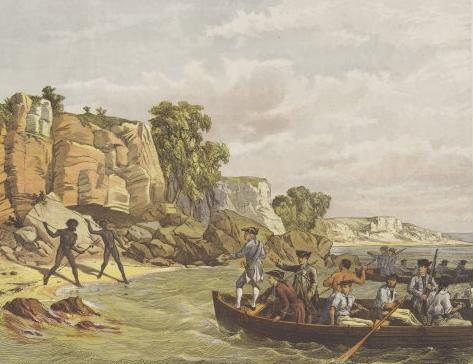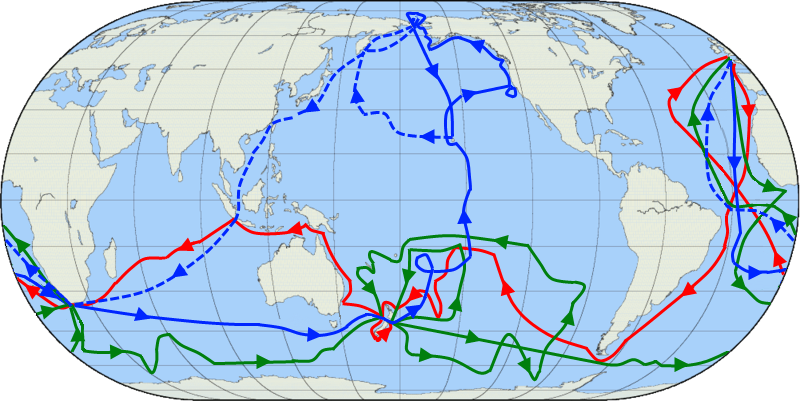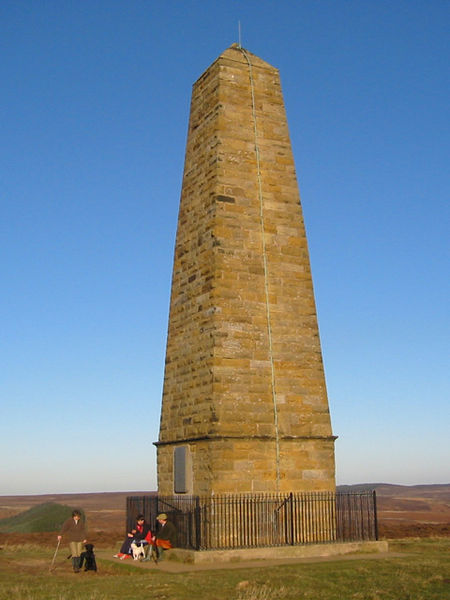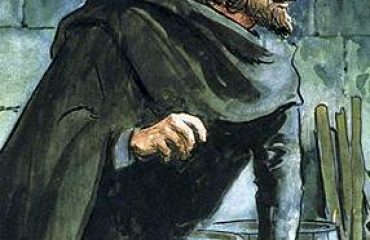Captain James Cook was an 18th Century explorer who discovered and mapped parts of the word, such as Australia, New Zealand and North America, His discoveries gave Britain and Europe a better knowledge of the planet’s geography and people in parts of the world which were previously unreachable.

Early Life and Seafaring Career
In 1728, Captain Cook was born in the village of Marton, North Yorkshire. He had a sense of adventure as a child and would regularly climb the nearby Roseberry Topping,
Aged sixteen he started working in a grocer’s shop at the nearby village of Staithes. His calling though was not selling potatoes to locals, but out to sea which could be seen through the shop window. Eventually he was introduced to the Walker family, who were coal merchants based in nearby Whitby. He started working for them as a merchant navy apprentice and his first voyage involved transporting coal down to London, aboard the ship, “Freelove.”
Cook’s apprenticeship with the Walkers enabled him to learn vital sea-fearing skills, such as astronomy, trigonometry, algebra and navigation, which would come in useful on future voyages.
After serving three years and passing his exams in 1752, Captain Cook quickly rose through the merchant navy ranks, being promoted to “mate” and working in the Baltic Sea.
In 1755 Cook joined the Royal Navy, where he saw action during the seven year war with France and other nations in Canada. His war experiences led him to learn yet more nautical skills, such as coastline mapping. Cook’s talent for cartography played a role in several British victories over the French during this war, notably at the St Lawrence River and in the siege of Quebec.
During his military service in North America, Cook outlined the famously jagged coastline of Newfoundland and Northern Canada and so his career in this field began. His skills came to the attention of The Royal Society, a specialised scientific group, founded in 1660, who had a special task in mind for him…
Voyage 1 – 1768 – Tahiti & ‘Terra Australis’ (Southland)
A great astronomical event was to take place in 1768, when the planet Venus crossed the face of the sun. This could only be seen from the Southern Hemisphere and Cook’s job was to track the planet’s path across the solar surface. Captain Cook and his crew set sail in 1768 and reached the island of Tahiti, where they were to observe the phenomenon the following year. Placed in their ship, the “Endeavour,” was an envelope sealed with further instructions from The Society, which was to be opened on their safe arrival to the Pacific Island.
When Cook opened the envelope, the second part of his mission was revealed. Once Venus had passed the sun Cook and his crew were to sail west to tryand discover the continent, “Terra Australis, or “South Land.”
The only evidence in the 18th Century that a Continent near the South Pole existed was from a theory that the polar lands in the Northern Hemisphere should be balanced by similar lands in the South. Leaving Tahiti, Cook sailed and mapped the coast of New Zealand, which had already been discovered a century earlier by Dutch explorer, Abel Tasman. Cook and his men managed to establish a good relationship with the native Maori people who let him onshore to draw maps of the islands, plus take samples of plants and animals to take home with him. Importantly the natives let him use New Zealand as a base in which to find the continent of “Southland.”
After concluding that the two islands of New Zealand were probably too small to be this vast continent, which was supposed to exist he travelled North West. Here he landed on the Eastern coast of Australia in 1770. Cook named the new area, New South Wales and made his first observations of the native Aborigines. Sailing around Australia he also encountered the Great Barrier Reef, which damaged his ship and took seven weeks to repair.
On arrival back to Britain, Cook and his crew were treated as heroes by the scientific community and his journals were published too much public interest.

Voyage 2: – The Search For The Southland
A second voyage to try and discover the existence of the Southern Continent was commissioned in 1772 and so once again Cook set sail with his crew on the “HMS Resolution.” On his first voyage two years previously he had managed to discover the East Coast of Australia but the polar continent was believed to lie much further south. After stopping on several Pacific Islands along the way, Cook headed south and discovered some more, colder islands within the Antarctic Circle, called South Georgia and The South Sandwich Islands. These lay just 75 miles off the coast of Antarctica. At this point Cook was forced to head North towards South Africa because of bad weather and ice. The vast continent which lay below would not be reached and fully explored until the 19th Century. Despite Captain James Cook’s failed attempt to discover the ‘Southern Continent, this second mission was still regarded as a success.
Voyage 3 – North America and Death
A third mission was commissioned, this time further north in an attempt to find the North-west passage, which was to be a trading route across the top of North America, through the Arctic Ocean to Europe. After dropping one of his navigators and guides, Omai back to his native Tahiti, Cook sailed North in 1778 and became the first Europeans to land on the island of Hawaii. During his visit he managed to map most of America’s north west coast including Alaska for the first time. He hit a stumbling block when he reached the Beiring Strait, the narrow passage of sea which separates Alaska from Russia. Bad weather meant that Cook’s crew had to sail south to the calmer waters of Hawaii. The explorers were initially treated as gods by the islanders, but things turned sour when the mast off their ship broke and they had to extend their stay on the island to carry out necessary repairs. To make matters worse a smaller boat belonging to Cook was stolen by a group of natives and the angry explorer sought revenge. He attempted to take the king of Hawaii hostage but was killed by an angry crowd when it became clear what he was attempting to do. Captain Cook’s life ended suddenly on 14th February 1779 in a fit of temper aged 51.

Legacy

Despite his untimely death, Cook’s legacy has lived on. Many of the maps in which he made during his three voyages were still used until the mid-20th Century. The Cook Islands in which the explorer had visited in 1773 and 1777 were named after him in the 1820s by a Russian cartographer, Adam Johann von Krusenstern. Statues and tributes to his presence on several of the islands he discovered and explored, including Hawaii are still standing today. In Australia, artefacts of his voyage there are on display in their national museum in New South Wales. In Britain Cook is commemorated as being one of the great explorers that ever lived and none more so than in his native Yorkshire. Two museums are dedicated to him, one in his home village of Marton and the other in Whitby, where he served his apprenticeship. A monument was constructed in 1827 in dedication to the explorer on Easby Moor near Great Ayton on the North Yorkshire Moors. The year 2020 marked the 250th anniversary of Captain Cook landing at Botany Bay in Australia which held a series of events and exhibitions to hail the Yorkshireman who travelled the world.



